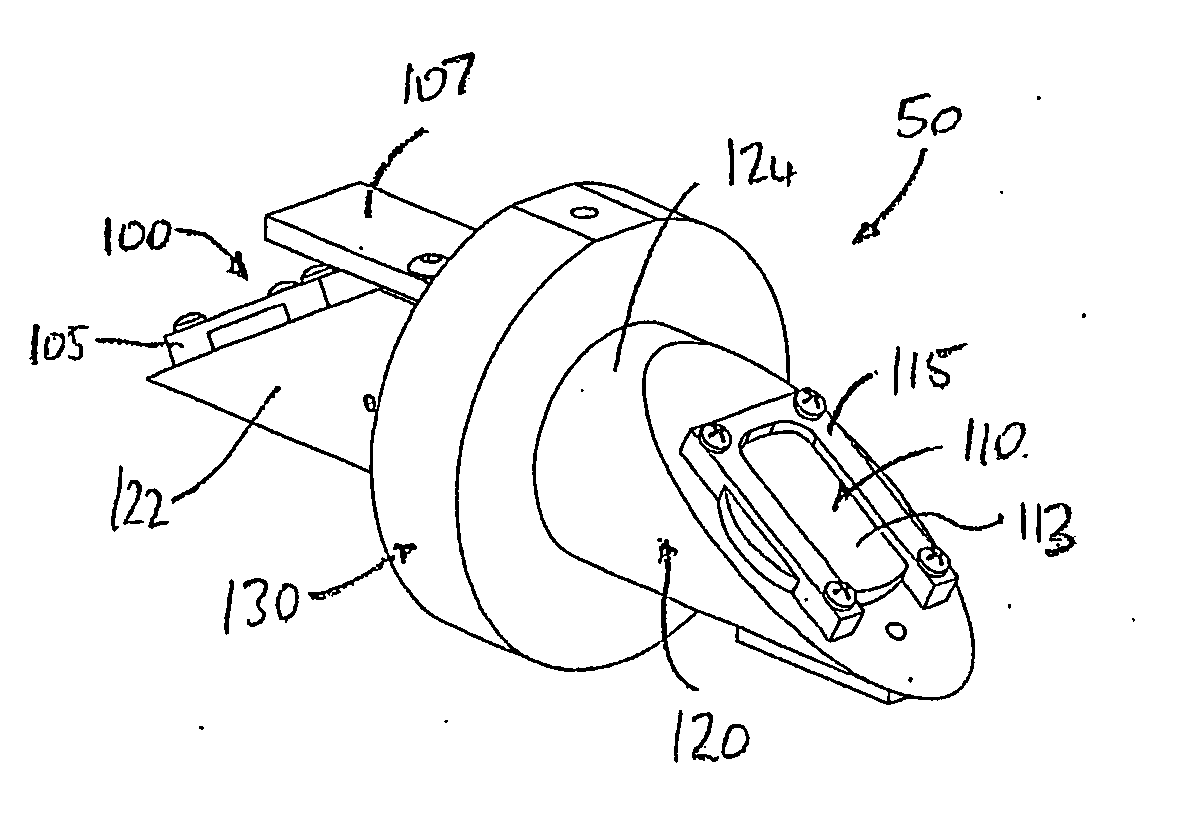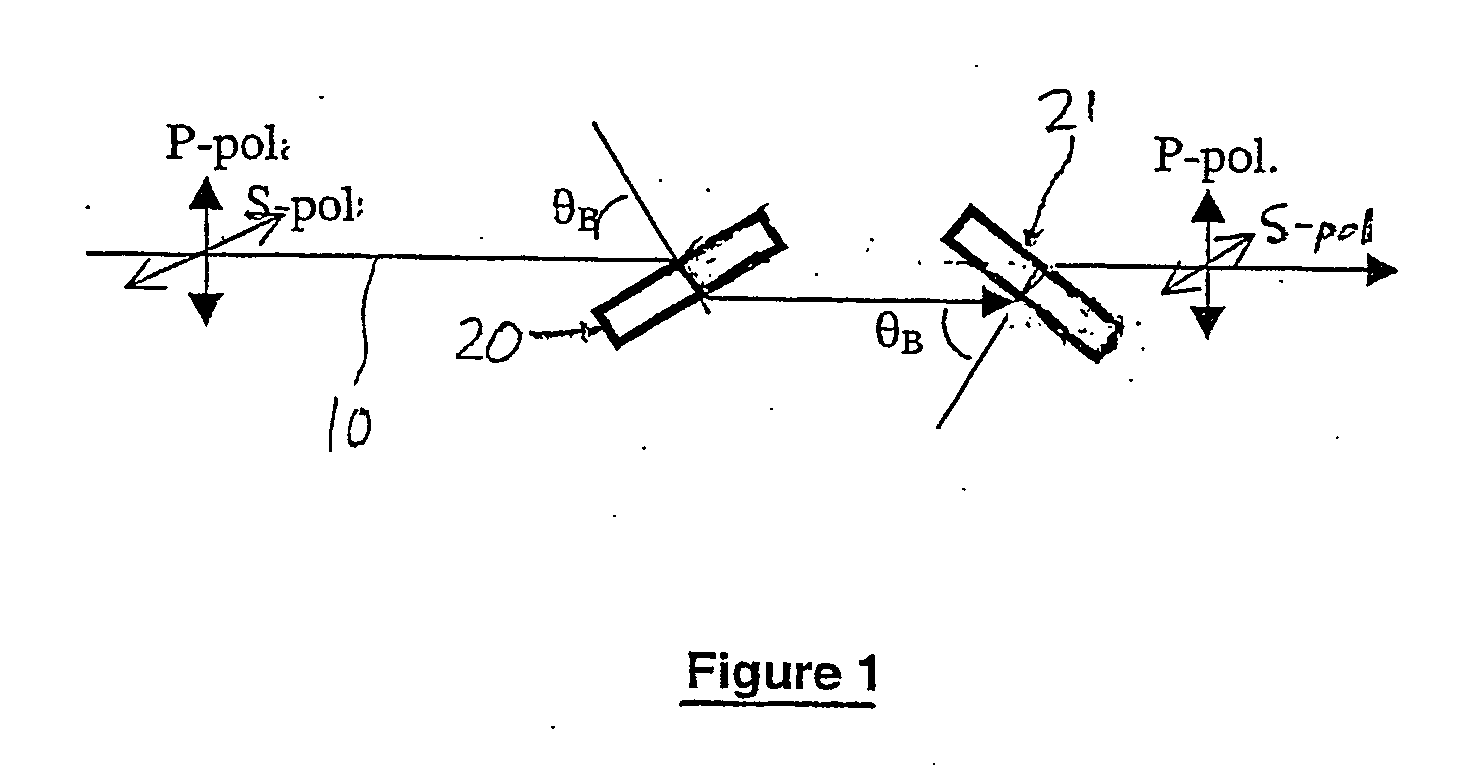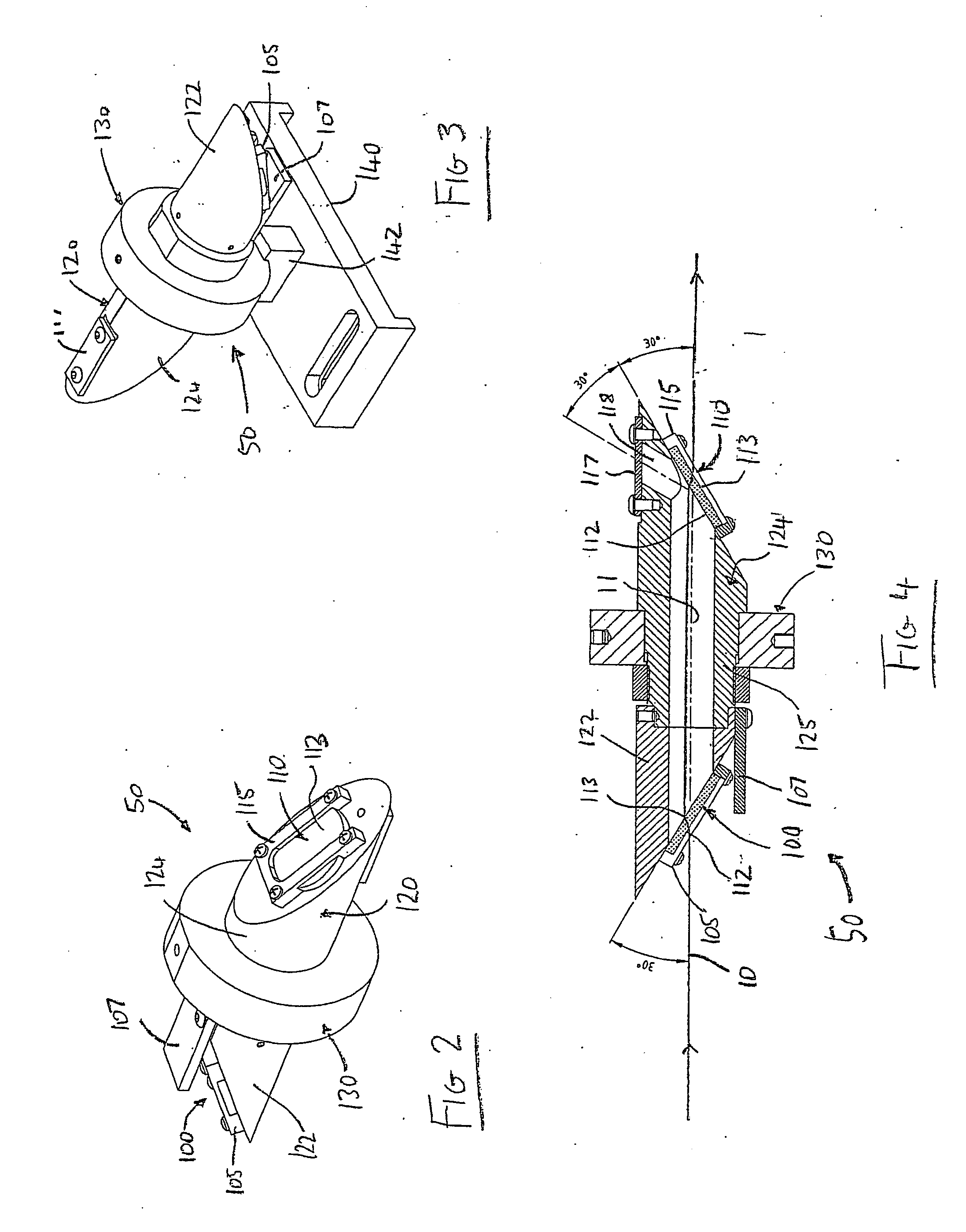Variable attenuator
- Summary
- Abstract
- Description
- Claims
- Application Information
AI Technical Summary
Benefits of technology
Problems solved by technology
Method used
Image
Examples
first embodiment
[0038] Referring to FIGS. 2 to 4, attenuator 50 consists of a pair of spaced windows 100, 110 each having parallel faces 112, 113. Windows 100, 110 are located at and close to the respective ends of a closed tube 120. The tube 120 is constructed from aluminium or another suitable material and functions purely as a mount for the windows 100&110. Tube 120 is in two interlocking parts 122, 124, one including a centre region 125, and is held in a rotator bearing 130 by a nut 132. The assembly is held via a support block 142 engaging rotator bearing 130, on a standard optical mount (shown at 140 in FIG. 3 only). In this way, the device is positioned in the laser beam delivery path so that the axis 11 of the tube is co-incident with the laser beam propagation path 10, ie. the optic axis. The assembly may have more or fewer window elements inserted depending on the amount of attenuation variability required, but will most preferably have an even number of windows.
[0039] Windows 100, 110 ar...
second embodiment
[0043] the present invention involves adjusting the windows around the axis of beam polarisation, and is depicted purely schematically in FIG. 5. In this arrangement the windows 200, 210 are not rotated around the beam incident axis, but are instead adjusted about axes 208, 209 perpendicular to the beam axis, as represented by arrows 205, 206 in FIG. 5. The two elements 200, 210 are mechanically linked to rotate synchronously but oppositely and maintain beam offset: arrows 205 indicate rotation that increases the angle of incidence and arrows 206 indicate rotation to decrease the angle of incidence. Windows 200, 210 may be supported on either side by a mounting frame (not shown) with a gear system attached to the mount.
[0044]FIG. 6 is a plot of theoretical and experimental transmittances against rotational angle of variable attenuator 50. This example illustrates the attenuation range in a 1064 nm wavelength Nd:YAG laser system. As the attenuator angle increases the 1064 nm transmit...
PUM
 Login to view more
Login to view more Abstract
Description
Claims
Application Information
 Login to view more
Login to view more - R&D Engineer
- R&D Manager
- IP Professional
- Industry Leading Data Capabilities
- Powerful AI technology
- Patent DNA Extraction
Browse by: Latest US Patents, China's latest patents, Technical Efficacy Thesaurus, Application Domain, Technology Topic.
© 2024 PatSnap. All rights reserved.Legal|Privacy policy|Modern Slavery Act Transparency Statement|Sitemap



